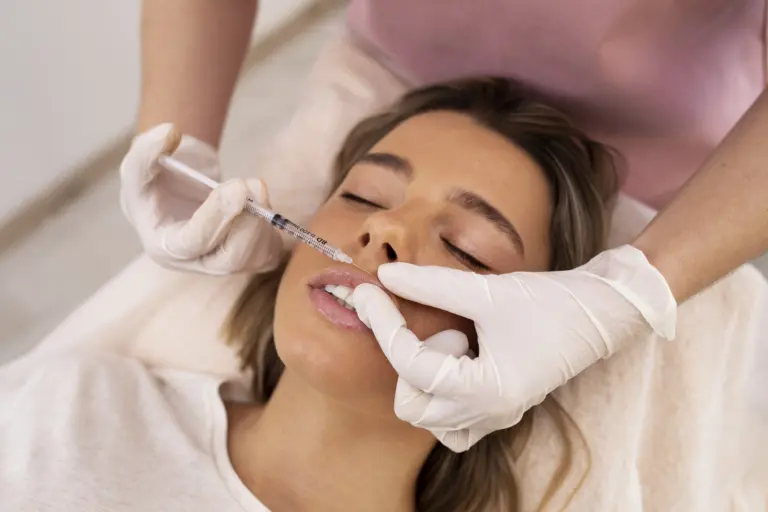
Dermal fillers have revolutionized the approach to non-surgical facial rejuvenation. Interestingly, it has been around for 16 years but has only surged in popularity in the last couple of years. This guide will clear up dermal fillers, explaining what they are, what to expect during the procedure, and how to prepare for it.
Dermal fillers are injectable body-safe substances used to enhance facial features, smooth out wrinkles, and restore volume. The most used fillers:
The choice of filler comes down to the look you would like to achieve as well as what you feel comfortable with. There are no wrong answers.
The primary benefits of dermal fillers include reduced signs of aging, improved facial symmetry, and enhanced natural beauty without the need for invasive surgery. They offer immediate results with minimal downtime, making them a popular choice for those seeking quick and effective aesthetic enhancements.
The consultation process is a critical step before receiving dermal fillers. It begins with an in-depth discussion with a qualified practitioner who will assess your facial structure and skin quality and discuss your aesthetic goals. This is an opportunity to express your expectations and any concerns you might have. The practitioner will also review your medical history, including any allergies or skin conditions, to ensure the suitability of dermal fillers for you. They may take photographs for before-and-after comparisons and create a customized treatment plan. This consultative approach ensures the procedure is tailored to your unique needs, maximizing safety and effectiveness.
Preparation is important to ensure a smoother procedure and recovery. It’s advised to avoid blood-thinning medications and supplements like aspirin, ibuprofen, and vitamin E for about a week before the treatment to reduce the risk of bruising. Alcohol consumption should also be minimized a few days prior. Staying hydrated and maintaining a healthy skincare routine helps prepare the skin for the procedure. It’s also recommended to schedule the treatment when you don’t have major events soon after, as there might be some temporary swelling or bruising post-treatment.
The procedure itself is relatively quick, often taking less than an hour. The practitioner will apply a numbing cream before injecting the fillers into the targeted areas. You may feel mild discomfort, but generally, the dermal filler process is not painful.
After receiving dermal fillers, following specific aftercare instructions is important to ensure optimal results and minimize potential side effects. Common guidelines include avoiding touching or applying pressure to the treated areas for a few hours post-procedure to prevent displacement of the filler. It’s also advisable to avoid high temperatures, such as saunas or intense workouts, for a few days. Applying ice or a cold compress can help reduce swelling and bruising. Additionally, patients should avoid alcohol and certain skincare products as recommended by their practitioner. Proper aftercare is crucial for both healing and the longevity of the filler effects.
While dermal fillers are generally safe, they do come with potential risks that should be considered. These include allergic reactions, which are rare but possible, especially in those with sensitivities to filler ingredients. Infection and bruising at the injection site are also potential risks. Asymmetry and lumps can occur if the filler is not administered evenly. Choosing a qualified and experienced practitioner who understands facial anatomy thoroughly is vital to minimize these risks. Additionally, discussing concerns and questions during the consultation can help mitigate potential issues.
Dermal fillers offer a safe and effective way to enhance facial aesthetics. Understanding what to expect and preparing adequately can help ensure a positive experience with satisfying results. Contact us to speak to a professional or book an appointment.